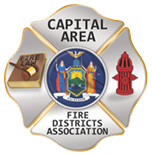July 28th Update from Chairman Denniston:
The NVFC OSHA Task Force has been hard at work trying to help with an OSHA 1910.156 standard that would protect our nation’s firefighters but do it in a way that is technically and economically feasible for all communities across the US. The NVFC also set up taskforce groups that looked at individual parts of the proposed standards and made suggestions on what may or may not work, especially for our volunteer departments. The efforts of all involved have been an extremely valuable resource for the NVFC, and nations fire service as a whole.
In June, Members of the task force met with representatives from the International Association of Fire Chiefs including Billy Goldfeder and the International Association of Firefighters including General President Ed Kelly. Our meeting was very cordial and productive. We reviewed the record including prehearing comments, written comments, “in-person” comments and post hearing comments. We identified areas of concern and common threads throughout those comments. The main consensus from all in attendance was that the ERS, as written, is a one-size fits all document and needs some refinement and clarification. We were all in agreement that the majority of neither the volunteer or career departments were currently, or could, meet the rule without significant changes that were either economically or technically feasible. We collaborated for three days and were able to recommend some potential solutions:
- We concluded that bulk of the safety concerns with significant risk could, and should, be addressed within a local Emergency Response Plan. The local ERP is key to identifying hazards and addressing solutions to keep responders safe. This approach removes the one-size fits all concerns echoed throughout the process.
- We recommend shifting many of the responsibilities for compliance to the respective States and Authorities Having Jurisdiction (AHJ) and away from federal jurisdiction.
- There was consensus to remove any reference to NFPA standards incorporated by reference (IBR) other than those that might be required by OSHA/Department of Labor such as the selection of turnout gear. We would also recommend that any reference to the life of serviceability of an item, such as 10-year turnout-gear life, be removed and instead inspection language be used to identify when an item should be removed from service.
- We have developed a proposed timeline for compliance for each section of the ERS that would account for time needed to stand up the solutions and the logistics required to implement it.
- We concluded that it is essential that additional working groups be formed to develop resources to be co-branded by all organizations (IAFF, NVFC, IAFC), to assist local AHJ’s in understanding and implementing the ERS. These would include templates for Emergency Response Plans (ERP), Risk Management Plans, Pre-Incident Plans. This would also include developing training resources and webinars to educate the fire service. The key here is to assist local jurisdictions with the requirements of any rule instead of burdening them with it.
- We discussed the recent personnel changes in both the OSHA Administration and the Department of Labor and how this may impact on the joint work we are doing.
- Our NVFC working group was grateful for the work of the NVFC Red Ribbon Panels and we used this information extensively during our discussions with the group. We agreed that the value of many of the suggestions of these groups would be instrumental in the building of compliance resources and the fewer details actually built into the rule itself the better. The majority of the recommendations belong in the hands of the local jurisdiction and states and not within federal oversight or details of the rule.
- We believe all of our suggestions are supported by logical outgrowth of the process and supported by the record and process to date.
Moving forward, we anticipate additional meetings to discuss the next steps for this important and unprecedented process in aligning our organizations with the goal of improved responder safety. Overall, we feel good about the working relationships that we are developing with the partner organizations to be continued for the good of the fire service at large.
Dave Denniston – NVFC Taskforce Chair
